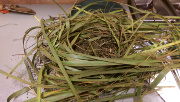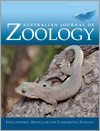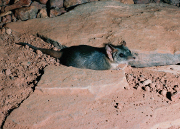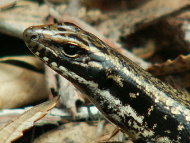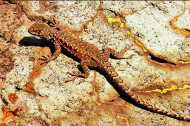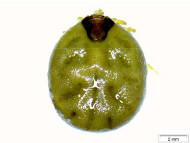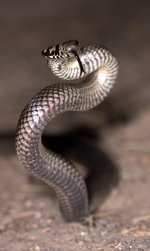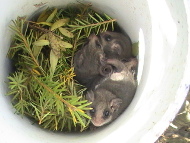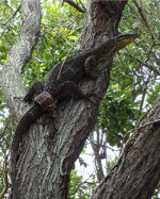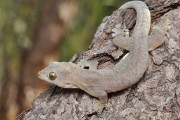Australian Journal of Zoology
Volume 65
Number 6 2017
Female platypuses invested an average of 8 h over 2 to 5 nights nesting. Nests mostly contained mat-rush leaves and all burrows had similar features, including narrow tunnels and ‘pugs’ of backfilled earth, leading to a compacted chamber. Nesting burrows create a secure place with the right conditions for the rearing of young.
Photo by Jessica Thomas.
Pseudantechinus woolleyae is a seasonal breeder and young are born from late July to early October. They mature when ~7 months old. Both males and females are potentially capable of breeding in more than one year. Males have accessory erectile tissue that does not form an appendage on the penis.
Photo by P. A. Woolley and D. Walsh.
We tested the effects of rotational logging on population and genetic diversity of the lizard, Eulamprus heatwolei, in forests of south-eastern Australia. Logging produced a curvilinear trend in E. heatwolei populations, with abundance peaking at 10–20 years postlogging, while its genetic diversity was unaffected, suggesting robust and outbred populations.
Photo by Tim Simon Jessop.
Liolaemus monticola is an endemic lizard from the central Andes of Chile with an insectivorous diet. The most frequent prey is Formicidae, on which it feeds in a greater proportion compared to their availability in the environment. The annual diet is less variable than the seasonal fluctuations in the environment.
Photo by Manuel Jara.
A nationwide survey was conducted for echidna ticks that had been previously collected and archived within Australian natural history collections. Eight species were identified with two new tick-host records. This is the first survey to utilise archived Australian tick collections to acquire new data on tick species that parasitise echidnas.
Photo by Anna-Sheree Krige.
We describe population structure, growth rates, survival and capture probability in a population of the pale-headed snake. Our results suggest that the species is a ‘k’ strategist, characterised by slow maturation and low fecundity. These traits suggest that populations will recover slowly following decline, exacerbating the risk of local extinction.
Photo by M. B. Shelton.
The eastern pygmy-possum has posed a challenge in attempts to describe its population density. We conducted a mark–recapture study over two years with a grid of nest boxes in a 9-ha patch of banksia heath–woodland. We estimated the density of adult pygmy-possums to be 1.5–4.2 ha–1.
Photo by R. Goldingay.
We used global positioning system (GPS) devices to monitor coastal lace monitor behaviour adjacent to a sea turtle nesting beach. The results showed that lace monitors spent most of their time in woodland habitat away from the seafront dunes, suggesting they did not pose a significant threat to sea turtle nests.
Photo by Juan Lei.
Comparative phylogeography of three northern Australian Gehyra gecko species bolsters support for the role of western Gulf region mountain ranges as important climate-change refugia. High phylogeographic diversity, particularly in rock specialists, indicates long-term retention and generation of unique genetic lineages, highlighting the need to encompass these landscapes in protected areas.
Photo by Stuart Nielsen.
